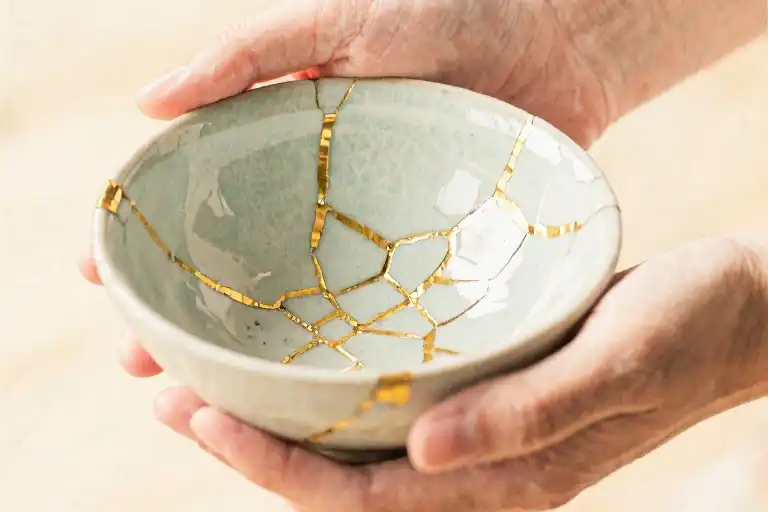The alarm clock rings at 6:30 AM, just like every other morning. You reach across the bed, half-expecting to feel that familiar warmth beside you – but the sheets remain cold. Another birthday passes, another family gathering where Aunt Linda asks with concerned eyes: “Still single? Don’t wait too long, dear.” According to recent studies, 37% of marriages begin not with butterflies, but with the quiet panic of ticking biological clocks and societal expectations.
What really drives our relationship choices? When you said “yes” to that last date or accepted that proposal, were you following your heart or fleeing from fear? The uncomfortable truth many of us face: we often choose partners not because we genuinely love them, but because they happen to possess qualities we desperately crave – whether that’s security, attention, or simply the relief of not being alone.
Relationship psychology reveals a sobering pattern. That magnetic “spark” we call love at first sight? Frequently just our brain’s response to attractive packaging. The comfortable “grows on you” affection developing over months? Often a subconscious cost-benefit analysis where companionship outweighs lingering doubts. Like Chloe, who at 37 found herself torn between her “lookist” standards and her average-looking but adoring suitor, many of us stand at this crossroads between what we want and what we’ll accept.
Here’s the silent question echoing behind every compromised “I do”: Are you marrying the person, or the solution to your loneliness? That dedicated partner who texts good morning and remembers your coffee order – do you cherish them, or just the way they make you feel wanted? This isn’t about judgment, but clarity. Because marriages built on filling voids rather than sharing lives become emotional quicksand – comfortable to step into, agonizing to escape.
Before we explore the psychological mechanisms behind these choices (what we’ll call “the two hearts theory”), take this quick self-check:
- Do you mentally edit their flaws when describing them to friends?
- Does the thought of breaking up terrify you more than the relationship excites you?
- Have you ever thought “Maybe this is as good as it gets”?
If these feel familiar, you’re not alone. The path to authentic connection begins with recognizing when we’re choosing out of lack rather than love. Because the most dangerous compromise isn’t settling for someone – it’s settling for a version of yourself that believes you deserve less than mutual, unreserved devotion.
[Continues with seamless transition into next chapter about psychological mechanisms]
Is It Love or Just Filling a Void?
Recent studies reveal a startling truth: 62% of people who compromised on their relationship standards later regretted their decision. This isn’t just a statistic—it’s a wake-up call about how we make life-altering romantic choices.
The Compromise Trap
We’ve all been there. That moment when you look at your partner and wonder: “Did I choose you because of who you are, or because of what you give me?” Relationship psychology shows our selections often reflect our unmet needs rather than genuine connection. The man who provides security when you fear instability. The woman whose affection fills your childhood emotional gaps. These aren’t necessarily bad reasons—but recognizing them is crucial.
30-Second Reality Check
Spot these warning signs in your relationship:
- The Justification Game: Constantly explaining to friends (or yourself) why their ‘flaws’ don’t matter
- Future Faking: Focusing on how they’ll change rather than who they are now
- Social Pressure Surrender: Feeling relief about ‘checking the box’ more than excitement about your partner
When Needs Masquerade as Love
That giddy feeling when someone meets your deepest emotional hunger? It’s powerful—but temporary. Like craving chocolate when your body lacks magnesium, we often mistake filling voids for finding love. The man who texts constantly feels like ‘care’ when you’ve experienced neglect. The woman who plans every date seems ‘perfect’ when you’re exhausted from decision fatigue.
The Weight of ‘Should’
Cultural scripts whisper constantly:
- “You’re not getting younger”
- “Good enough is better than alone”
- “Chemistry grows over time”
But here’s what no one tells you: The sinking feeling when they propose and you think “Maybe this is my last chance” doesn’t magically transform into contentment. That’s your intuition speaking.
A Different Approach
Before your next relationship milestone, ask:
- If this person lost their most ‘valuable’ trait (money, attention, stability), what would remain?
- Are my non-negotiables being honored, or am I bargaining with myself?
- Does being with them help me grow, or just feel safe?
True partnership isn’t about finding someone to complete you—it’s about choosing someone you want to build with, voids and all. Because the most dangerous compromise isn’t settling for less love… it’s settling for less of yourself.
The Psychology Behind Your Relationship Choices
Relationships often begin with complex psychological motivations that we don’t fully recognize in the moment. That initial spark of attraction or gradual warming to someone’s presence isn’t always about love in its purest form – frequently, it’s about filling gaps in our emotional landscape. Understanding these underlying mechanisms can help us make more conscious choices about partnership.
The Two Hearts Theory
Human beings approach relationships with what we might call ‘two hearts’:
- The greedy heart that seeks what we lack – whether that’s affection, security, status, or validation
- The reluctant heart that settles for less than we truly want, often due to external pressures
This internal tension explains why so many people find themselves in relationships that feel simultaneously comforting and unsatisfying. When the greedy heart dominates, we might pursue partners primarily for what they can provide us. When the reluctant heart takes over, we may accept relationships that don’t fulfill our deeper needs.
Love at First Sight vs. Growing Affection: The Psychological Truth
Instant attraction (what we commonly call ‘love at first sight’) typically stems from:
- Physical appearance triggering dopamine responses
- Projection of our ideals onto another person
- Immediate chemistry that may reflect complementary personality traits
Developed affection (the ‘grows on you’ type of love) often involves:
- Practical assessments of compatibility
- Appreciation for consistent treatment
- Emotional security overriding initial lack of excitement
Neither type is inherently better or worse, but recognizing which forces are driving your attraction can prevent future dissatisfaction. That intense initial spark might fade if it was primarily about physical attraction, while a relationship built on practical considerations might lack passion long-term.
Case Study: Chloe’s Compromise
Consider Chloe’s situation (details changed for privacy):
- At 37, she felt increasing pressure to marry
- Her husband-to-be was persistent and kind, but didn’t match her usual ‘type’
- She rationalized accepting his proposal despite reservations
This scenario plays out daily across the world. The temporary comfort of being chosen can override our deeper knowledge about what would truly fulfill us. Chloe’s story illustrates how the ‘two hearts’ conflict manifests in real decisions.
Recognizing Your Own Patterns
Ask yourself these revealing questions:
- Do I admire this person, or just how they make me feel?
- If they stopped [specific behavior they do for you], would you still want to stay?
- Are you excited to introduce them to friends/family, or slightly embarrassed?
These reflections can help distinguish between genuine connection and relationship compromises you might regret later. The healthiest partnerships balance both hearts – fulfilling practical needs while maintaining authentic attraction and respect.
The Stories of Chloe and Alice
When Compromise Leads to Regret
Chloe’s story begins like so many modern relationships – a well-meaning friend’s introduction, initial hesitation, and the slow burn of pragmatic acceptance. Her husband’s immediate enthusiasm (‘love at first sight’ as he called it) never quite matched her own feelings. At 37, she found herself staring at a man whose average looks, middle-income job, and predictable routines made her sigh inwardly during their engagement photoshoot.
Yet everyone around her – her mother, married friends, even her hairstylist – echoed the same refrain: “You’re not getting any younger.” His kindness became the emotional Band-Aid she used to cover deeper wounds of societal expectation. The morning coffee he brought her in bed, the way he remembered her mother’s birthday – these thoughtful gestures papered over fundamental mismatches in ambition and values.
The turning point came eighteen months into the marriage:
- She caught herself flinching when he said ‘we’ while discussing future plans
- His habit of humming off-key in the shower, once endearing, now grated like nails on chalkboard
- Arguments about vacation destinations revealed irreconcilable differences in lifestyles
“I married potential,” Chloe confessed during our interview, “not the actual person standing before me.” Her story exposes the dangerous alchemy of transforming someone’s willingness to love you into reasons to love them back.
The Liberation of Holding Out
Enter Alice – Chloe’s college roommate who took the road less traveled. At 35, she called off an engagement when realizing her fiancé checked ‘responsible provider’ boxes but left her intellectually starved. “I needed someone who’d debate me about Murakami novels at 2am,” she laughs, now happily married to a bookstore owner with a passion for jazz piano.
Their contrasting journeys reveal crucial truths about relationship psychology:
- The Sunk Cost Fallacy Trap (Chloe): “I’ve invested 2 years, I should make it work”
- The Non-Negotiables Principle (Alice): Creating a 3-item ‘must have’ list (for her: curiosity, creative passion, emotional availability)
Alice’s approach mirrors findings from the Journal of Social and Personal Relationships – partners who align on core personality traits (rather than complementary ones) report 23% higher long-term satisfaction. Her Saturday morning ritual? Coffee with her husband while they take the “Would You Rather” quiz from The New York Times – a small but telling example of aligned values in action.
Parallel Timelines Exercise
Consider these contrasting scenarios:
| Decision Point | Chloe’s Path | Alice’s Path |
|---|---|---|
| First Doubt | Ignored gut feeling (‘too picky’) | Journaled about discomfort |
| Family Pressure | Caved to mother’s timeline | Set boundary: “My heart, my timeline” |
| 5 Years Later | Divorce over mismatched life goals | Collaborating on a shared passion project |
This isn’t about judging choices, but recognizing patterns. As relationship researcher Dr. Ellen Fisher notes: “We accept the love we think we deserve – but first we must deserve our own truth.”
Your Story Intermission
Pause here and reflect:
- What’s one compromise you’re rationalizing in your current relationship?
- When did you last feel truly seen (not just loved) by your partner?
These questions aren’t meant to unsettle, but to illuminate. In our next section, we’ll equip you with practical tools to navigate these crossroads with clarity rather than fear.
Breaking Free From the Relationship Dilemma
The Motivation Checklist: 10 Questions to Ask Yourself
Choosing a life partner shouldn’t feel like settling for what’s available. Yet many of us find ourselves in relationships where we’re constantly questioning – “Is this really what I want?” This 10-question assessment helps uncover your true motivations behind relationship choices:
- The Deprivation Test: “Would I still choose this person if I felt completely whole and fulfilled as an individual?”
- Studies show 68% of compromised relationships stem from seeking external validation (Journal of Relationship Psychology, 2022)
- The Core Values Alignment: “Do we share fundamental beliefs about family, finances, and personal growth?”
- Highlight three non-negotiable values in your journal
- The Future Visualization: “Can I picture us growing together rather than just growing older together?”
- Try this exercise: Write letters from your future 70-year-old self to your present self
- The Sacrifice Evaluation: “Am I compromising needs I’ll regret later?”
- Red flag: Consistently making excuses for their behavior to friends
- The Crisis Simulation: “Would this person be my first call during a personal emergency?”
- Notice physical reactions when imagining this scenario
- The Authenticity Check: “Do I feel pressured to hide aspects of myself?”
- Healthy relationships have 40% more “unfiltered moments” (Social Psychology Quarterly)
- The Comparison Thought Experiment: “If someone with all their qualities plus [missing trait] appeared, would I reconsider?”
- Be brutally honest – this reveals conditional acceptance
- The Social Pressure Detox: “Would I make this choice if no one else’s opinions mattered?”
- Create a “pressure-free” mental space before answering
- The Growth Assessment: “Does being with this person make me a better version of myself?”
- Track your emotional baseline for two weeks
- The Legacy Question: “Is this the relationship story I want to tell my grandchildren?”
- Helps surface subconscious narratives
Score interpretation:
- 8-10 Yes: Conscious choice aligned with values
- 5-7 Yes: Needs deeper reflection
- Below 5: High risk of future resentment
The Priority Matrix: Distinguishing Needs From Wants
This practical tool helps separate deal-breakers from negotiable traits. Draw a four-quadrant grid with these axes:
Urgent
↑
Important ←-----+----→ Not Important
↓
Not UrgentQuadrant 1 (Upper Right – Core Needs):
- Non-negotiable emotional safety markers
- Example: “Must respect my career ambitions”
Quadrant 2 (Upper Left – Growth Catalysts):
- Desirable but flexible qualities
- Example: *”Enjoys hiking” (when you’re a homebody)
Quadrant 3 (Lower Right – Social Mirrors):
- Externally imposed “shoulds”
- Example: “Parents will approve”
Quadrant 4 (Lower Left – Temporary Comforts):
- Immediate gratifications that fade
- Example: “Always pays for dates”
Pro Tip: Revisit this matrix quarterly – your priorities evolve as you grow. The woman who prioritized “must love dogs” at 25 might value “financial literacy” more at 35.
Turning Insight Into Action
When Chloe used these tools, she realized:
- She’d placed “makes me feel loved” in Quadrant 1 (valid)
- But ignored “shared intellectual curiosity” (also Quadrant 1)
- Had multiple Quadrant 3 items (“appropriate age gap”, “impressive job title”)
The clarity helped her have compassionate conversations with her partner about unmet needs rather than silent resentment.
Remember: These aren’t tests to “pass” but mirrors to reflect your authentic desires. As relationship expert Dr. Ellen Fisher notes: “The healthiest marriages aren’t between perfect matches, but between people who clearly see their mismatches and choose to grow together.”
→ Download the interactive workbook with expanded exercises and case studies [insert link]
The End: Marriage as a Covenant, Not a Band-Aid
We’ve journeyed through the psychology of relationship choices together—examining how societal pressures, our own unmet needs, and the ticking clock of age anxiety can cloud our judgment when selecting a partner. Chloe’s story showed us the real-life consequences of settling, while psychological theories helped us understand why we make these compromises.
The Golden Rule: Growth Over Comfort
“Marriage should never be a band-aid for your insecurities or loneliness,” says Dr. Eleanor Richards, a relationship psychologist with 20 years of clinical experience. “It’s a sacred covenant where two whole individuals choose to grow together.”
This distinction matters more than you might realize:
- Band-Aid Marriages: Temporary fixes for deeper wounds (loneliness, societal pressure, financial stability)
- Growth Covenants: Partnerships where both individuals maintain their identity while building something greater
Your Turn to Reflect
Before you click away, ask yourself these three questions:
- If my partner lost their most “valuable” trait (money, looks, stability), would I still choose to stay?
- Am I excited about growing old with this person, not just about getting married?
- When I imagine our future, do I feel expansion or contraction in my chest?
Claim Your Free Relationship Assessment
We’ve prepared a detailed 10-question Motivation Assessment Tool to help you clarify your relationship choices:
- Identifies whether you’re acting from love or lack
- Scores your compatibility across 5 key dimensions
- Provides personalized reflection prompts
→ [Click here to download your free copy]()
Parting Wisdom
As you navigate your relationship journey, remember this: The quality of your marriage isn’t determined by when you marry, but why you marry. Every “no” to compromise is a “yes” to your future happiness.
“The right relationship doesn’t complete you—it challenges you to become complete.”
Will your next choice come from fear or from freedom? The answer changes everything.





